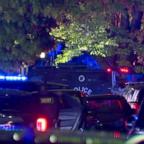Airports urged to study bird-strike risks
— -- One in three of the nation's commercial airports have failed to take legally required action to reduce the hazards of planes striking birds, a federal review has found.
The Federal Aviation Administration (FAA) found that about 150 airports did not complete studies of wildlife hazards despite their histories of serious collisions between aircraft and birds or other animals, according to four government and industry officials. None would comment publicly before the FAA releases its findings.
The studies are the critical first step that airports use to identify bird risks and develop a plan to keep wildlife away from planes. A list of the airports wasn't disclosed because each has to be notified by the FAA before it will be publicly identified as having failed to complete the hazard surveys.
The FAA has notified the Airports Council International-North America of its findings and said that it intends to contact airports within days, according Chris Oswald, the group's vice president for safety and operations.
The situation shows that airports aren't taking the risks seriously, said Paul Eschenfelder, lead instructor in the Embry-Riddle Aeronautical University's airport wildlife control program.
"It just shows how this problem has been ignored and shuffled to the side by the aviation community over the years," Eschenfelder said. "It takes a catastrophe to focus everybody's attention."
Federal regulators have been studying whether large birds have created a growing hazard to planes.
A US Airways jet struck a flock of Canada geese on Jan. 15, knocking out both engines and forcing the plane to splash down in New York's Hudson River.
The National Transportation Safety Board will begin a two-day hearing starting Tuesday into the accident. The pilots and flight attendants were hailed as heroes after the nearly powerless Airbus A320 touched down in the river and everyone escaped.
Federal aviation law requires that airports conduct an assessment of hazards from birds or other wildlife if planes have major collisions with animals. The assessment, which must be approved by FAA inspectors, serves as a guide for how the airport should deal with the wildlife.




